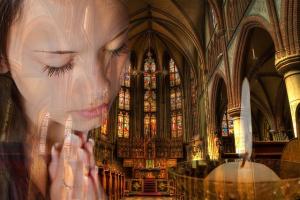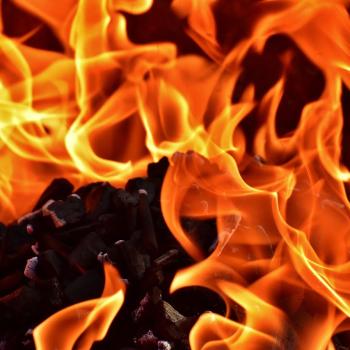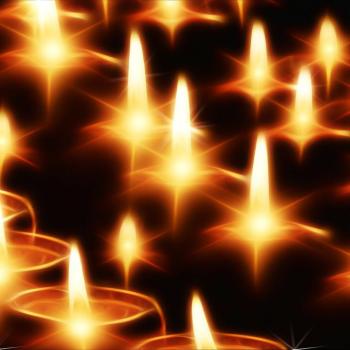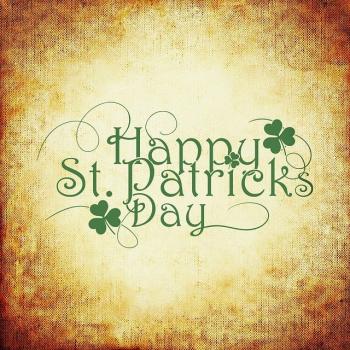What is Advent? When Is It? How Do We Celebrate It?

Advent coincides with the Christmas season, but it means more to Christians than Santa Claus, shopping, gift-giving and football games – or at least it should.
The word “advent” means “arrival” or “coming,” and it is Christ’s birth and second coming that capture our imaginations during the four weeks prior to Christmas.
If you’re new to the Christian faith, a Christian who has never observed Advent or simply a person who is curious, you’re in the right place to discover the season. Join me for a beginner’s guide to Advent.
What Does the Bible Say?
The Advent season puts Christ at the center of Christmas and brings Christians a sense of anticipation, peace and joy as we prepare to celebrate the Savior’s birth.
“For unto to us a child is born, unto us a son is given; and the government shall be upon his shoulders; and his name shall be called Wonderful Counselor, Mighty God, Everlasting Father, Prince of Peace.” Isaiah 9:6 prophesizes the birth in the Old Testament, as do other scriptures.
The New Testament books of Matthew, Mark, Luke and John tell the story of Christ’s birth and the fulfillment of those prophecies. We learn about the angel’s visit to Mary, Mary and Joseph’s journey to Bethlehem and Christ’s birth, shepherds learning about the birth from angels, and wise men from the East worshipping the new King.
What Will I Learn Here?
I have celebrated Advent for many years but have never delved deeply into the season until this year. I’ll tell you why this season is different shortly.
I’m excited about the things I’ve learned and want to share them with you. I also will direct you to posts by experts who know much more about Advent than I do.
Please remember that Christians celebrate Advent in many different ways, and not all Christians celebrate the season. I can’t possibly cover everything. I’m focusing on the most widely accepted traditions with the hope that they enrich your holiday season.
Who celebrates Advent?
The three major Christian traditions — Catholic, Protestant and Orthodox — celebrate Advent. Learn more here.
When do we celebrate Advent?
The Advent season begins four Sundays before Christmas in most churches and ends on Christmas Eve. This year, we mark the beginning of the season on Sunday, Nov. 27, which is today as I post this article. The beginning of Advent also begins the church calendar year.
How Did Advent Begin?
The first written evidence of Advent dates to around 380 A.D., according to The Gospel Coalition, which is a network of “evangelical churches in the Reformed tradition.”
In its article “The History of Advent,” the organization says the church initially focused on Christ’s second coming during the first two weeks of the season and shifted the focus to Christ’s birth in the last two weeks. Read more here.
“Christmas came to be associated with the birth of Christ as a result of it falling during the December Solstice, the darkest day of the year in the northern hemisphere. The coming of the Light of the World made a lot of sense in so much darkness….
“Advent took on significance the same way Lent did: both were preparation for the more significant season on the horizon.” Lent preceded Easter, and Advent came before Christmas.
Part of Advent’s rise can be attributed to the widespread religious and secular celebration of Christmas. The article notes, “Numerous Advent devotionals, calendars, and homespun methods of marking the season have sprouted up in recent years.”
How do Christians celebrate Advent?
Catholics, Protestants and Orthodox Christians have different rituals and traditions, and individual churches observe the season in different ways, as well. Some people even focus on counting down the days to Christmas rather than on Christ.
But for most of us who celebrate the season, Advent is a time of prayer, scripture readings and devotionals, reflection, peace and love.
We place Nativity scenes in prominent places and light candles on Advent wreaths as we read scripture, pray and sing hymns. Some of us include fasting, and some use Advent calendars.
Catholics:
The U.S. Conference of Catholic Bishops explains some Catholic traditions in an article called “What Is Advent?”
“The Advent season is a time of preparation that directs our hearts and minds to Christ’s second coming at the end of time and to the anniversary of Our Lord’s birth on Christmas,” the bishops explain. Read more here.
Lutherans:
The Lutheran Church traditionally begins Advent on the Sunday closest to St. Andrew’s Day, which is celebrated every Nov. 30. (St. Andrew’s Day honors one of Christ’s 12 disciples.) As with Catholics, they include the lighting of Advent candles on successive Sundays during the season.
“There is so much beauty and rich tradition during the season of Advent….” says Lutheran Deaconess Betsy Karkan, who serves at Concordia University-Chicago. She encourages Christians to “consider getting an Advent wreath for your home as you prepare for the coming of Christ, the light of the world.” Read her blog post here.
Anglican: “Church decorations are simple and sparse, and purple is the traditional colour used” in the Church of England. “Advent falls at the darkest time of the year, and the natural symbols of darkness and light are powerfully at work throughout Advent and Christmas,” the church explains. Read more here.
Methodist: Ryan Dunn, an ordained deacon of the United Methodist Church, talks about the season in a blog post called “What is Advent About?”
“During Advent we’re anticipating the full realization of something that began at the first Christmas but isn’t fully realized,” Dunn says. He also points out the distinction between Christmas and Advent and says, “It’s important to note that distinction so we can be fully mindful of the hope that faith speaks into our human experience.” Read more here.
Evangelicals & Pentecostals: Advent isn’t a season that many of Evangelical and Pentecostal Christians celebrate. One evangelical who loves the season is Andrea L. Turpin, associate professor of history at Baylor University.
In her Patheos blog post entitled “Why I Love Advent,” she writes that Advent “stares present darkness and evil straight in the face but also actively kindles hope in God’s deliverance. Grittier fare than candy canes and gingerbread. I love these as much as the next person, and they can be aids to rejoicing in hope, but by themselves they don’t satisfy.” Read more here.
In Orthodox churches, Christians light candles on an Advent wreath each Sunday during the season, which lasts from Nov. 15 to Dec. 24. They also read devotionals, pray and fast. During the fast, they give up red meat, fish and poultry, dairy products and wine except on certain feast days and other breaks.
What’s the significance of Advent wreaths?
Many Christian churches light Advent wreaths over the four-week season, although specifics vary from one church or denomination to another.
Advent wreaths typically consist of greenery, which represents eternal life, and four candles, which represent various aspects of Advent.
Parishioners light the candles one at a time on successive Sundays. Traditional colors are purple and pink, although blue candles have become customary in some churches. They remind us of heaven and Christ’s second coming. Many churches also include a fifth candle, which is white. They light this candle on Christmas Eve.
The first candle that is lit is called the prophecy candle, hope candle or expectation candle. It reminds us of God’s promises throughout the Old Testament to send a Messiah.
On the second Sunday of Advent, the prophecy candle is lit along with the Bethlehem candle, which is also called the peace candle or expectation candle. It represents faith.
The third candle is called the shepherds’ candle or joy candle, while the fourth candle is the angel candle or love candle. The fifth and last candle is the Christ Candle. It reminds us that Christ brought his light into a world of darkness.
Which scriptures are typically read?
The Old and New Testaments contain a number of scriptures that are appropriate for Advent. Among them are:
- Isaiah 40:3 tells us to “prepare the way for the Lord.”
- Micah 5:2 foretells the Messiah’s birth in Bethlehem.
- Hebrews 4:14-16 reminds us that Christ was tempted but never sinned.
- Colossians 1:15-20 tells us that Jesus is eternal, and he created all things.
- 2 Corinthians 8:9 urges us to follow Christ’s example of generous grace.
- Isaiah 9:2-7 is a song of praise and thanksgiving to God.
Why is Advent important to me?
Sitting quietly on a church pew, I pray, watch the lighting of candles on the Advent wreath, read scripture, sing hymns and listen to sermons about the coming of the Messiah. I feel very close to God during these moments. This time is sacred.
On Christmas Eve, I attend a candlelight service to mark the end of Advent and beginning of the Christmas season. It’s a quietly beautiful service that includes words from the pastor and the singing of hymns.
As the service concludes, church members form a large circle and light the candles we hold in our hands. The sanctuary slowly fills with light, and we sing “Silent Night.” The stressful moments of Christmas fade, and I feel a deep peace.
Most of my children and grandchildren haven’t observed Advent in the past, but we’re changing our celebration of the holidays this year. One change I’m making is to share Advent with my family. It may be especially important that I do so.
We suffered a terrible loss when my son-in-law died in April. This first Christmas without him will be difficult for my daughter, the children and our extended family. It’s a loss all of us will feel for many years to come.
My hope is that Advent lessens the pain we feel and brings us some measure of peace.












